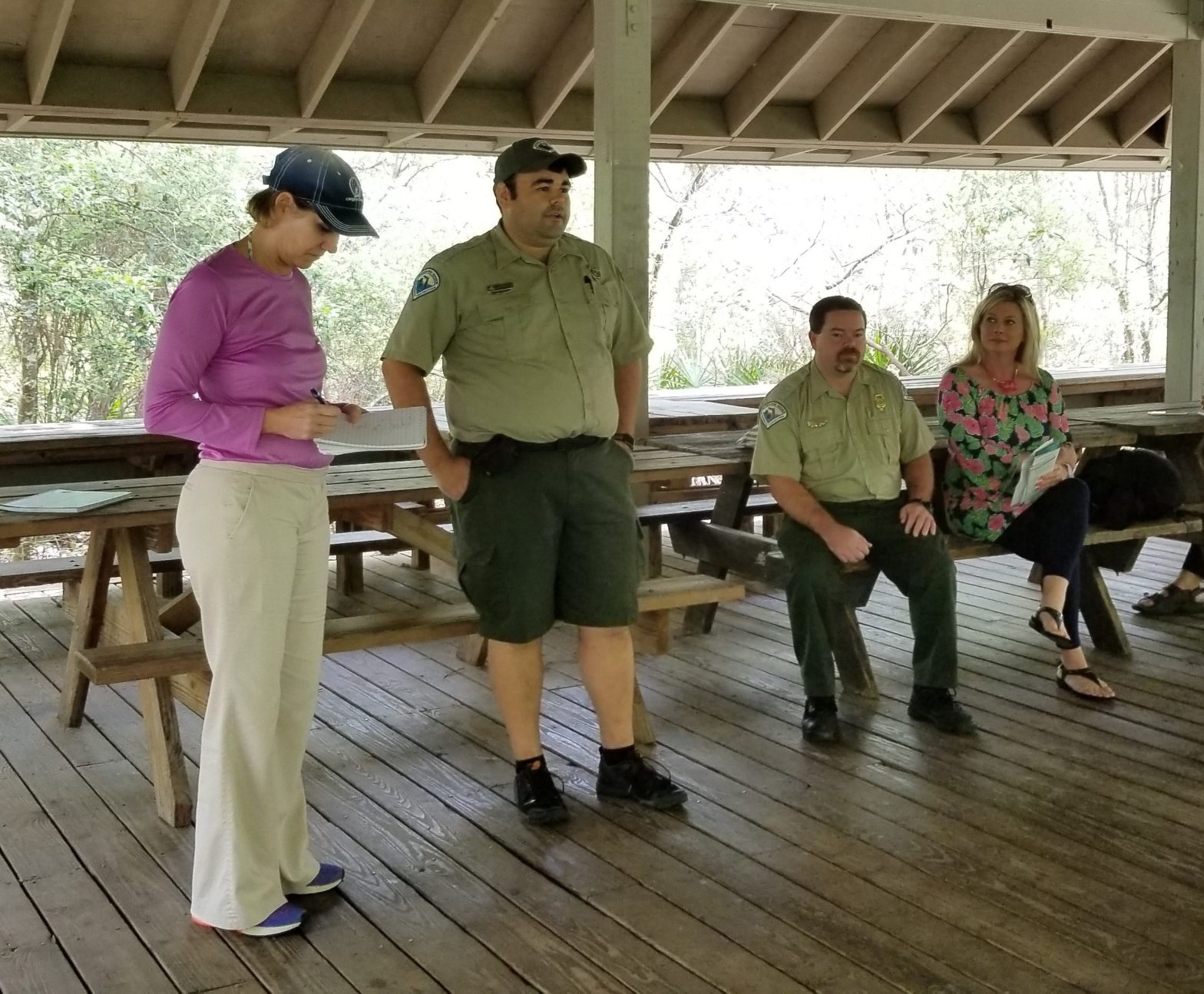![Blackwater River State Park Services Specialist Darrell Hatfield (second from left) and Park Manager Marshall Shaw (second from right) explain park management to a recent group. [ALICIA ADAMS | Press Gazette]](http://127.0.0.1/wordpress/wp-content/uploads/2022/01/ghows-DA-6b280857-d13a-0695-e053-0100007fa5b4-844434f8.jpeg)
MILTON — If there is smoke in the air, chances are it is coming from a controlled fire in one of Florida’s largest forests, the Blackwater River State Forest.
According to the Florida Department of Agriculture and Consumer Services, a prescribed burn follows precautionary measures which allow the fire to be confined to a predetermined area and accomplishes the planned land management objectives.
But why is fire necessary?
“The best way to think of it is, 10,000 years ago before there were people here, lightning would start a fire and it would burn to the river and burn clear across the landscape,” Blackwater River State Park Manager Marshall Shaw said. “That happened for thousands and thousands of years, and the plants and animals depended on it. Then we started building stuff and putting the fire out and it actually damaged the forests. Prescribed fires are actually a way that we can go back in and mimic that in order to help restore the forest to the way it’s supposed to be.”
According to Shaw, natural fire breaks — such as sidewalks, roadways and the Blackwater River — are used to keep the fires contained and to not disturb the habitats.
“This whole community is fire dependent and requires prescribed fires to survive,” Park Services Specialist Darrell Hatfield said. “We try to work with the winds and use [them] to our advantage.”
Blackwater River State Park was established in 1967. The park opened in 1968 with 360 acres. In 1981, an additional 230 acres were acquired from the Division of Forestry. The park, along with the adjoining 206,900-acre Blackwater River State Forest, depends on controlled burns to thrive.
The forest is managed for timber, watershed protection, wildlife habitat, endangered and threatened species and recreation.
The prescribed burn program enhances the habitat of native fauna and flora by controlling the hardwoods and underbrush that can replace the variety of fragile species living on the forest, the FDACS website says. Controlled burning allows for the maintenance of the largest remaining fragment of longleaf pine and wiregrass ecosystem in the world, as well as preventing possible wildfires.
“A lot of people think fire is bad, and we’re always dealing with that public image thing to get that out there,” Shaw said.



This article originally appeared on Santa Rosa Press Gazette: Controlled fires help forests thrive
